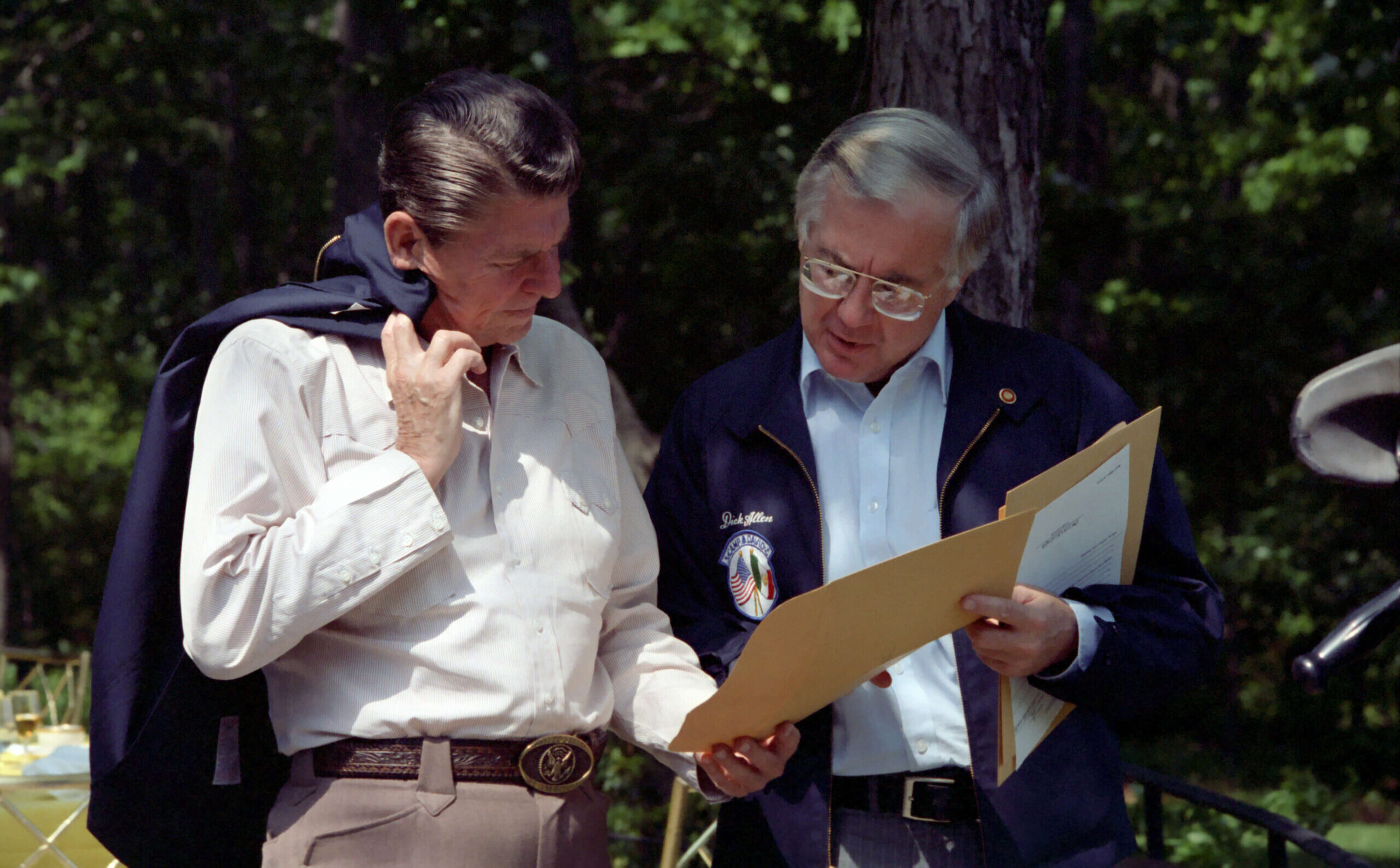On Grand Strategy
By John Lewis Gaddis
(Penguin, 2018)
A more accurate title for John Lewis Gaddis’s new tome might have been On Grand Strategists. For his book is far more focused on the characters and actions of historical figures he considers grand strategists than on any modern strategic debate. From the classics (Clausewitz and Machiavelli) to the incongruous (Tolstoy and Isaiah Berlin), Gaddis largely focuses on the lessons of great philosophers and practitioners, avoiding contemporary debates.
As a result, this book is not what you might expect from Gaddis, who is sometimes described as the dean of Cold War historians. It comes in the later years of a long career in which his writings focused heavily on the intimate dissection of strategic choices, grounded in historical context and the record of how policymakers succeeded or failed in pursuing them. Given Gaddis’s previous work, the absence of the postwar period in this book—and by extension, the absence of any examination of his own record on grand strategy—is a notable deficiency.
Instead, On Grand Strategy is a primer for aspiring grand strategists. As Gaddis, channeling Machiavelli, might put it, “It is not possible for me to make a better gift than to offer you the opportunity of understanding in the shortest time all that I have learnt in so many years.” The text is closely adapted from the author’s Yale undergraduate seminar, with the shortcomings that origin might suggest. Certainly many chapters present important lessons: from Thucydides, we learn the importance of seeing the whole picture; from Clausewitz and Tolstoy, the inherent limitations of theory. Yet the book’s greatest strength—that its lessons can be applied widely to the real world—is also its greatest weakness. It explores how to think about strategy but leaves readers to figure out for themselves how to put it into practice.
Indeed, the book disappoints in part because of its failure to examine the practical questions surrounding the implementation of grand strategy in a modern setting. Whether it is the omission of the Cold War strategists with whom Gaddis has had such a long-running relationship or the failure to discuss his own experiences contributing to strategic debates during the Clinton and George W. Bush administrations, the absence of contemporary questions is strange given the almost valedictory nature of the book. One suspects that students and readers alike could have learned much from some reflection on the remarkable era in which Gaddis himself has lived and worked.
Perhaps this silence shouldn’t surprise us. Gaddis has cautioned against using past strategies as a map for today’s foreign policy, noting that while “the principles of grand strategy may be transferable across time and space . . . the copying of grand strategies, however successful they may once have been, is quite another matter.” In this book he is focused almost entirely on transferable principles. The result feels more like a counterpart to Gaddis’s existing works than a standalone study. In other words, On Grand Strategy may explore how to think about strategy, but it must be paired with Strategies of Containment (to explore how poorly policymakers often fare when called to implement such strategies) and Surprise, Security, and the American Experience (to understand Gaddis’s own attempts to define and shape the Bush administration’s grand strategy of preemption).
For those familiar with these other works, On Grand Strategy carries implications that aren’t reflected in the actual text. The shadow of Gaddis’s Cold War writings, most of all his engagement with the thinking of George Kennan, looms large over his musings. For it is a distinctly realist, Kennanite approach to grand strategy that Gaddis advocates here. Kennan, as Gaddis notes in Strategies of Containment, advocated “a view conscious of the fact that because capabilities are finite, interests must be also,” and argued that “if competition was to take place, it [should] do so on terrain and with instruments best calculated to apply American strengths against Soviet weakness.”
Gaddis’s fundamental commandments for the budding grand strategist build on these simple precepts: Align your capabilities and interests. Stay flexible; unwillingness to adapt is the reason many leaders fail so abjectly. Fight your battles asymmetrically. Use history as a guide, but don’t be shackled by it. Likewise, understand the limitations of theory—it is a blueprint, not a straitjacket. And remember that while morality is a useful tool or frame, “statecraft . . . can never balance realism against idealism: there are only competing realisms.” Thus while the book itself doesn’t make it past the 1940s, it is hard not to see it as an endorsement of Kennan’s approach to foreign policy and, almost by definition, a strong critique of America’s post–Cold War grand strategy.
What is strange here is that Gaddis himself largely abandoned these principles when offered the opportunity to influence grand strategy. Certainly he was critical of the Clinton administration’s unthinking expansion of NATO to incorporate Eastern European states—the reason his Yale seminar course was conceived in the first place. Yet his writings throughout the 2000s reflected his ardent support for the Bush Doctrine, a grand strategy he linked historically to America’s westward expansion, placing both under the umbrella of “preemptive action.”
Though sometimes critical of the means by which the Bush administration pursued these goals, Gaddis nevertheless strongly advocated a policy of militant Wilsonianism as the only way to keep America safe in the aftermath of the 9/11 attacks. He was a strong supporter of the Iraq War, predicting in his response to the publication of the 2002 National Security Strategy that a successful invasion of Iraq would reveal the Bush Doctrine to be “a truly grand strategy,” vindicating the use of preventive war as a tool against “terrorists and tyrants” alike. In doing so, he neglected the most basic of the lessons he tries to impart in On Grand Strategy, abandoning proportionality and asymmetric thinking, emphasizing ends over means, and embracing overconfidence and idealism.
In short, to judge America’s post–Cold War strategies, including Gaddis’s own contributions, by Kennan’s standards is to find failure on almost every count. Take NATO enlargement, the quintessential example of failing to see the whole picture. Enlargement was a victory for stabilization and economic development but ignored Russian security interests, creating new tensions and a worsening European security environment. Likewise, the continued, inflexible commitment of U.S. policymakers to decades-old security ties has resulted in many of today’s most absurd foreign policy contradictions: members of NATO’s “community of democracies” slide into authoritarianism, while we actively support states like Saudi Arabia that undermine our broader interests in counterterrorism and regional stability.
Meanwhile, the Bush Doctrine and our approach to terrorism more broadly have seen ends and means completely disconnected since at least 2002, as we pour endless resources into a never-ending fight against foes who pose, at most, a relatively minor risk to the United States. The continued expansion of the war on terror to any country that cries “terrorism” bogs the U.S. down in local skirmishes with little connection to national security. Policymakers’ simultaneous embrace of “humanitarian intervention” in states like Libya puts idealism above practicality, with action often producing worse outcomes than inaction.
Perhaps worst of all, we have failed to learn to think asymmetrically, consistently confronting potential adversaries at their strongest point, whether that involves conducting freedom-of-navigation exercises in the South China Sea or adding forward-deployed troops in the Baltic states in response to Russian regional activism. Other states have learned all too well that the United States may be too strong to counter in direct military confrontation but that this does not preclude asymmetric actions where we are weak. Russian election interference and meddling in European politics—indeed, all the clichéd actions of so-called “hybrid warfare”—are a manifestation of this classic strategic commandment.
The biggest takeaway from On Grand Strategy is the importance of limitations: the limitations of theory itself, the limitations of history for today’s foreign policy, and even the need to recognize the limitations of existing strategies. Gaddis teaches us the need to pivot and find a new approach when needed. If flexibility is Gaddis’s central message, the sum of “all that he has learnt in so many years” as a historian, then this book is a clear condemnation of the post–Cold War foreign policy elite, their unwillingness to pivot to new approaches, and their insistence on doubling down on a massively unsuccessful foreign policy. It is also, however, a relatively banal observation.
In the context of Gaddis’s other works, and the failures of post–Cold War U.S. policy, then, On Grand Strategy suggests that it is easier to propose general principles for formulating strategy than it is to implement them. U.S. foreign policy today runs largely on autopilot, with operational pressures and dissenting voices often producing “strategies” that are little more than a mishmash of conflicting policy options.
Because it takes no explicit stance on which grand strategy is best, however, this book is valuable in reminding scholars of various persuasions of the basic tenets of strategic thinking. Realists, for example, are undoubtedly right to criticize the history of NATO expansion, but they don’t always recognize that such criticism offers little in the way of a path to deal with the alliance amid Russian posturing and growing domestic discontent in many European members. And while restrainers are undoubtedly correct that America’s overseas military commitments have distorted and compromised the nation’s foreign policy, it is neither pragmatic nor realistic to assume that these commitments can disappear overnight without cost. Good strategists, as Gaddis highlights, should be able to hold to their abstract beliefs, understand that flexibility is sometimes required to achieve broader goals, and learn to live with that inconsistency.
Whatever its flaws, On Grand Strategy’s most valuable contribution may be the underlying message that making strategy is messy and that we often fail when trying to put it into practice. By tying his book to general principles rather than the particulars of recent history, Gaddis at least shows that it may still be possible to teach people to think strategically. And perhaps there are worse ways to start on the slow road to fixing American foreign policy than by educating students. On Grand Strategy doesn’t seek to provide the reader with answers, to lay blame or praise for America’s recent foreign policy choices, or to serve as a road map for how to solve today’s most pressing problems. For that, it insists, we simply have to learn to think for ourselves. ♦
Emma Ashford is a research fellow in defense and foreign policy at the Cato Institute.














